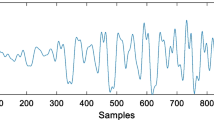Abstract
Authenticating the veracity and integrity of digital media content is the most important application of fragile watermarking technique. Recently, fragile watermarking schemes for digital audio signals are developed to not only detect the malicious falsification, but also recover the tampered audio content. However, they are fragile against synchronization counterfeiting attack, which greatly narrows the applicability of audio watermarking schemes. In this paper, a novel source coding scheme for authenticating audio signal based on set partitioning in hierarchical trees (SPIHT) encoding and chaotic dynamical system with capability of self-recovery and anti-synchronization counterfeiting attack is proposed. For self-recovery feature, the compressed version of audio signal generated by SPIHT source coding and protected against maliciously tampering by repeated coding is embedded into the original audio signal. Besides, for robustness against synchronization counterfeiting attack feature, based on the position and content of audio section, check bits are generated by Hash algorithm and chaotic sequence, and taken as part of fragile watermark. Simulation results show the self-embedding audio authentication scheme is recoverable with proper audio quality, and it has capability against synchronization counterfeiting attack.















Similar content being viewed by others
References
Alireza G, Boroujerdizadeh A, Yaribakht AH (2013) Blind Audio Watermarking for Tamper Detection based on LSB. IEEE 15th International Conference on Advanced Communications Technology (ICACT), pp.1077-1082
Diego R, Dora MBL, Camilo L (2018) Authenticity Verification of Audio Signals Based on Fragile Watermarking for Audio Forensics. Expert Syst Appl 91:211–222
Fan MQ, Liu PP, Wang HX (2013) A Semi-fragile Watermarking Scheme for Authenticating Audio Signal Based on Dual-tree Complex Wavelet Transform and Discrete Cosine Transform. Int J Comput Math 90:2588–2602
Fan MQ, Wang HX (2018) An Enhanced Fragile Watermarking Scheme to Digital Image Protection and Self-recovery. Signal Process Image Commun 66:19–29
Fan MQ, Wang HX, Li HJ (2012) A Fingerprint-based Audio Authentication Scheme Using Frequency Domain Statistical Characteristic. Multimed Tools Appl 51:2255–2270
Hwang M, Lee JS, Lee MS (2018) SVD-based Adaptive QIM Watermarking on Stereo Audio Signals. IEEE Transactions on Multimedia 20:45–54
ITU-T Recommendation G. (1996) Dual Rate Speech Coder for Multimedia Communications Transmitting at 5.3 and 6.3 kbits, 723.1
Korus P, Dziech A (2014) Adaptive Self-embedding Scheme with Controlled Reconstruction Performance. IEEE Transactions on Information Forensics Security 9:169–181
Liu JX, Lu ZM (2009) A Multipurpose Audio Watermarking Algorithm Based on Vector Quantization in DCT Domain. IEEE Trans Signal Process 31:395–400
Liu ZH, Luo D, Huang JW (2017) Tamper Recovery Algorithm for Digital Speech Signal Based on DWT and DCT. Multimed Tools Appl 76:12481–12504
Liu ZH, Wang HX (2014) A Novel Speech Content Authentication Algorithm Based on Bessel-Fourier Moments. Digital Signal Processing 24:197–208
Massachusetts Institute of Technology (MIT) Audio Database. Available: http://sound.media.mit.edu
Park CM, Thapa D, Wang GN (2007) Speech Authentication System Using Digital Watermarking and Pattern Recovery. Pattern Recogn Lett 28:931–938
Qian Q, Wang HX, Hu Y (2016) A Dual Fragile Watermarking Scheme for Speech Authentication. Multimed Tools Appl 75:13431–13450
Ronaldo R, Pedro GF, Mylène CQF (2016) Detecting Tampering in Audio-visual Content Using QIM Watermarking. Inf Sci 328:127–143
Saeed S, Mohammad AA, Aliazam A (2015) A Watermarking Method for Digital Speech Self-recovery. IEEE Trans Audio Speech Lang Process 23:1917–1925
Su ZP, Chang LJ, Zhang GF (2017) Window Switching Strategy Based Semi-fragile Watermarking for MP3 Tamper Detection. Multimed Tools Appl 76:9363–9386
Tang X, Ma ZF, Niu XX (2015) Compressive Sensing-based Audio Semi-fragile Zero-watermarking Algorithm. Chin J Electron 24:492–497
Wang HX, Fan MQ (2010) Centroid-based Semi-fragile Audio Watermarking in Hybrid Domain. SCIENCE CHINA Inf Sci 53:619–633
Xu DW, Wang RD, Wang JC (2011) A Novel Watermarking Scheme for H.264/AVC Video Authentication. Signal Process Image Commun 26:267–279
Yasunari Y, Taro A, Yohei K (2011) An Authentication Method for Digital Audio Using a Discrete Wavelet Transform. J Inf Secur 2:59–68
Yong X, Iynkaran N, Peng DZ (2018) Spread Spectrum Audio Watermarking Using Multiple Orthogonal PN Sequences and Variable Embedding Strengths and Polarities. IEEE/ACM Transactions on Audio, Speech, and Language Processing 26:529–539
Author information
Authors and Affiliations
Corresponding author
Additional information
Publisher’s note
Springer Nature remains neutral with regard to jurisdictional claims in published maps and institutional affiliations.
Rights and permissions
About this article
Cite this article
Fan, M. A source coding scheme for authenticating audio signal with capability of self-recovery and anti-synchronization counterfeiting attack. Multimed Tools Appl 79, 1037–1055 (2020). https://doi.org/10.1007/s11042-019-08095-x
Received:
Revised:
Accepted:
Published:
Issue Date:
DOI: https://doi.org/10.1007/s11042-019-08095-x




